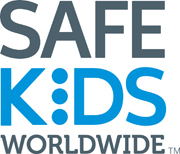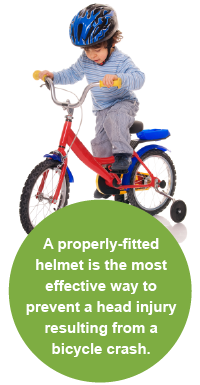Health Education & Promotion

CHILD CARE HEALTH CONSULTING
This program is offered with funding through the Missouri Department of Health and Senior Services and the Bureau of Child Care. The Chariton County Health Center has a RN that runs the program on a local level and does child care consults, Children’s presentations, and required training for daycare facilities.
To find out more about this program visit:
http://health.mo.gov/safety/childcare/providerinfo.php#health
MATERNAL CHILD HEALTH
Maternal and Child Health (MCH) Services Title V Block Grant is a federally funded program that focuses on improving maternal and child health in a variety of ways. The Chariton County Health Center has chosen to address the issue of reducing intentional and unintentional injuries among children, and adolescents. We have been handing our information at schools and the WIC program about car seat safety and bike safety. Also the Chariton County Health Center has two car seat technicians that can inspect proper installation of car seats or install the car seat for free. Thanks to the Department of Transportation and the MCH grant we do have a few car seats available to parents or guardians of infants and toddlers at no cost.
CAR SEATS
Why are car seats important for children? Click here for a video
| Types of Car Seats | ||
|---|---|---|
| Age Group | Type of seat | General guidelines |
| Infants and toddlers | Rear-facing only Rear-facing convertible |
All infants and toddlers should ride in a rear-facing seat until they are at least 2 years of age or reach the highest weight or height allowed by their car seat manufacturer. |
| Toddlers & preschoolers | Convertible Forward-facing with harness |
Children who have outgrown the rear-facing weight or height limit for their convertible seat should use a forward facing seat with a harness for as long as possible, up to the highest weight or height allowed by their car safety seat manufacturer. |
| School-aged children | Booster seats | All children whose weight or height exceeds the forward-facing limit for their car safety seat should use a belt-positioning booster seat until the vehicle seat belt fits properly, typically when they have reached 4 feet 9 inches in height and are 8 through 12 years of age. All children younger than 13 should ride in the back seat. |
| Older children | Seat belts | When children are old enough and large enough for the vehicle seat belt to fit them correctly, they should always use lap and shoulder seat belts for the best protection. All children younger than 13 years should ride in the back seat. |
BIKE HELMETS

THE HARD FACTS
Properly-fitted helmets can reduce the risk of head injuries by at least 45 percent
– yet less than half of children 14 and under usually wear a bike helmet.
Top Tips
1. Wear a properly-fitted helmet. It is the
best way to prevent head injuries and death.
2. Ride on the sidewalk when you can. If not,
ride in the same direction as traffic as far on
the right-hand side as possible.
3. Use hand signals and follow the rules of the road. Be predictable by making sure you ride in
a straight line and don’t swerve between cars.
4. Wear bright colors and use lights, especially when riding at night and in the morning. Reflectors on your clothes and bike will help
you be seen.
5. Ride with your children. Stick together until
you are comfortable that your kids are ready
to ride on their own.

CPR
CPR is offered to the public several times a year here at the Health Center and at the schools.
CPR is very important and one way of buying time until a defibrillator (AED) becomes available is to provide artificial breathing and circulation by performing cardiopulmonary resuscitation, or CPR. The earlier you give CPR to a person in cardiopulmonary arrest (no breathing, no heartbeat), the greater the chance of a successful resuscitation.
BABY SITTING CLASS
This is offered during the summer through the University Extension Service. The Chariton County Health Center teaches the baby sitting class where participants receive training in first aid, CPR, home safety, feeding a child, growth and development, toy safety, and providing healthy, easy meals and snacks.
For more information or to enroll in the class call the University Extension Service at 660-288-3239.

